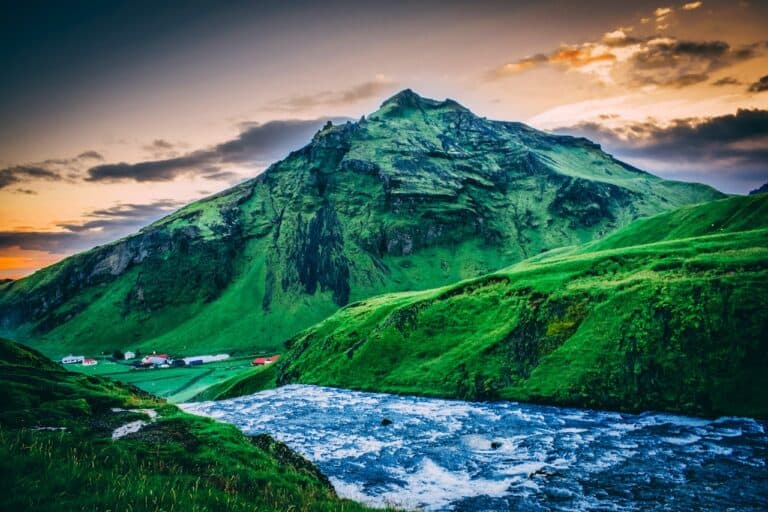Plug For Iceland: What You Need To Know

What is the plug for Iceland? Before you travel, check the information below to make sure your electronic devices are compatible with the outlet type and voltage.
Electrical Summary
Iceland uses outlet types C, F at a voltage of 230V and a frequency of 50 Hz.
Plug Compatibility: Type C, Type F
Voltage: 230V
Frequency: 50 Hz
Type C

Type F

Can North Americans use Electronics in Iceland without an Adapter?
No! North Americans will need an adapter for the outlets and a transformer for the voltage when traveling to Iceland. North Americans device plugs will not work with the outlet types in Iceland. Also, the voltage in Iceland is different from North American voltages.
Can Europeans use Electronics in Iceland without an adapter?
Yes! Europeans do not need a travel adapter or transformer when traveling to Iceland. Most device plugs will work with the outlet types in Iceland. Also, the voltage in Iceland is the same as in Europe.
What Outlet does Iceland Use?
Type C

Type C plug sockets are used in Europe, Africa and Asia. They have two round pins and no grounding pin. These plugs are typically used with devices that have a voltage of 220-240V. This outlet is rated for 2.5 amps. Plug Type E, and Type F are compatible with this socket. All other plug types will need an adapter.
Type F

Type F electrical plug sockets are used in Germany, Spain, Italy and some parts of Africa. They have two round pins and a grounding pin. These outlets are typically used with devices that have a voltage of 220-240V. This outlet is rated for 16 amps. Plug Type C and Type E are compatible with this socket. All other plug types will need an adapter.
Is it safe to drink water in Iceland?
The safety of drinking water in Iceland is generally excellent. According to the World Health Organization (WHO), nearly 100% of the population in Iceland has access to improved drinking water sources, which means that the water is from a protected well or spring, or treated through a piped system.
The water treatment system in Iceland is modern and meets European Union standards, and the tap water is safe to drink throughout the country. Icelandic tap water is naturally filtered by underground volcanic rocks and is of high quality, with a taste that is often described as fresh and clean.
Therefore, it is generally safe to drink tap water in Iceland without any special precautions. Bottled water is also available in Iceland, but it is not necessary to use it for drinking purposes.
If you are traveling to Iceland, it is recommended to consult with a healthcare provider or a travel health specialist for specific recommendations on how to stay healthy and avoid waterborne diseases.
We recommend always packing a filtered water bottle when traveling:
Travel Essentials
Be sure to check our list of travel essentials before your trip!
Should I get travel insurance when traveling to Iceland?
It is generally recommended to get travel insurance when traveling to a different country. Travel insurance can provide financial protection and peace of mind in case of unexpected events, such as medical emergencies, trip cancellations, lost or stolen baggage, or other travel-related mishaps.
Travel insurance can cover various expenses related to your trip, such as medical expenses, emergency medical transportation, trip cancellation or interruption, lost or stolen baggage or personal belongings, and other travel-related expenses.
Before purchasing travel insurance, it’s important to carefully review the policy details, including the coverage limits, exclusions, and any applicable deductibles or copays. You should also make sure that the policy covers any activities or destinations that you plan to participate in or visit during your trip.
Travel Summary
Where is Iceland?
Iceland is an island country located in the North Atlantic Ocean, near the Arctic Circle. It is situated between Greenland to the west, Norway to the east, and the United Kingdom and Ireland to the south.
How big is Iceland?
Iceland has a land area of approximately 103,000 square kilometers (40,000 square miles), making it the world’s 108th largest country by land area. It has a population of around 364,000 people.
What time is it in Iceland?
Iceland is in the Greenwich Mean Time (GMT) zone, which is the same as Coordinated Universal Time (UTC).
What language is spoken in Iceland?
The official language of Iceland is Icelandic, which is a North Germanic language. English is also widely spoken and understood, especially in tourist areas.
Where to stay in Iceland?
There are many options for accommodation in Iceland, including hotels, hostels, guesthouses, and Airbnb rentals. Popular areas to stay include Reykjavik, the Golden Circle, and the South Coast.
What continent is Iceland?
Iceland is located on the boundary of the North American and Eurasian tectonic plates, but it is generally considered to be a part of Europe.
When can you see the Northern Lights in Iceland?
The Northern Lights, also known as Aurora Borealis, can be seen in Iceland from late August to early April, with the best viewing conditions from September to March. It is recommended to visit during the winter months, when there are longer periods of darkness and clearer skies.
Where can you see the Northern Lights in Iceland?
The Northern Lights can be seen throughout Iceland, but the best places to view them are away from the city lights, in areas with clear skies and minimal cloud cover. Some popular spots include Thingvellir National Park, Kirkjufell mountain, and Jökulsárlón glacier lagoon.
What to do in Iceland?
Iceland, located in the North Atlantic Ocean, is a destination known for its stunning natural landscapes, unique geothermal activity, and friendly locals. The country’s capital city, Reykjavik, is a charming and vibrant cultural hub with colorful buildings, street art, and a thriving music scene.
Iceland’s most famous attraction is the Blue Lagoon, a geothermal spa with milky blue waters, surrounded by volcanic landscapes. Visitors can also explore Iceland’s many other geothermal hot springs, including the Secret Lagoon, the Mývatn Nature Baths, and the Reykjadalur Hot Springs.
Iceland is also known for its stunning glaciers, waterfalls, and wildlife. Visitors can go hiking on glaciers, take a boat ride to see whales and puffins, or explore the country’s many national parks, such as Thingvellir National Park, Vatnajökull National Park, and Snæfellsjökull National Park.
Iceland is a welcoming destination for travelers, with a strong sense of community and a high standard of living. The official language is Icelandic, but many people speak English as well. The country has a well-developed tourism infrastructure, with a range of accommodations and activities to suit all budgets and interests.
Overall, Iceland is a must-visit destination for anyone looking for a unique and unforgettable travel experience. With its stunning natural beauty, geothermal wonders, and welcoming locals, Iceland offers a truly one-of-a-kind adventure.
Traveling to another country? Check out our Countries page for more info.